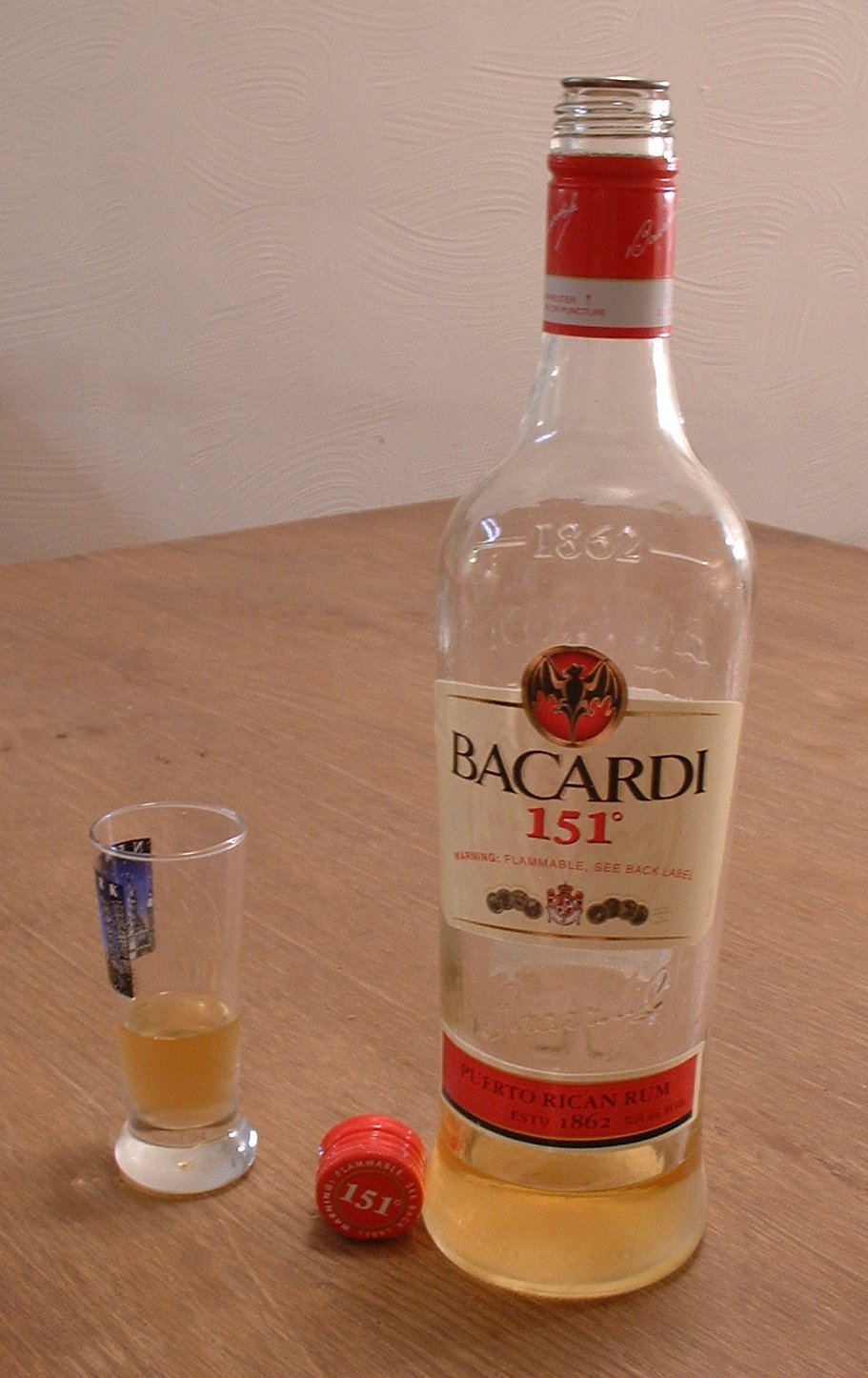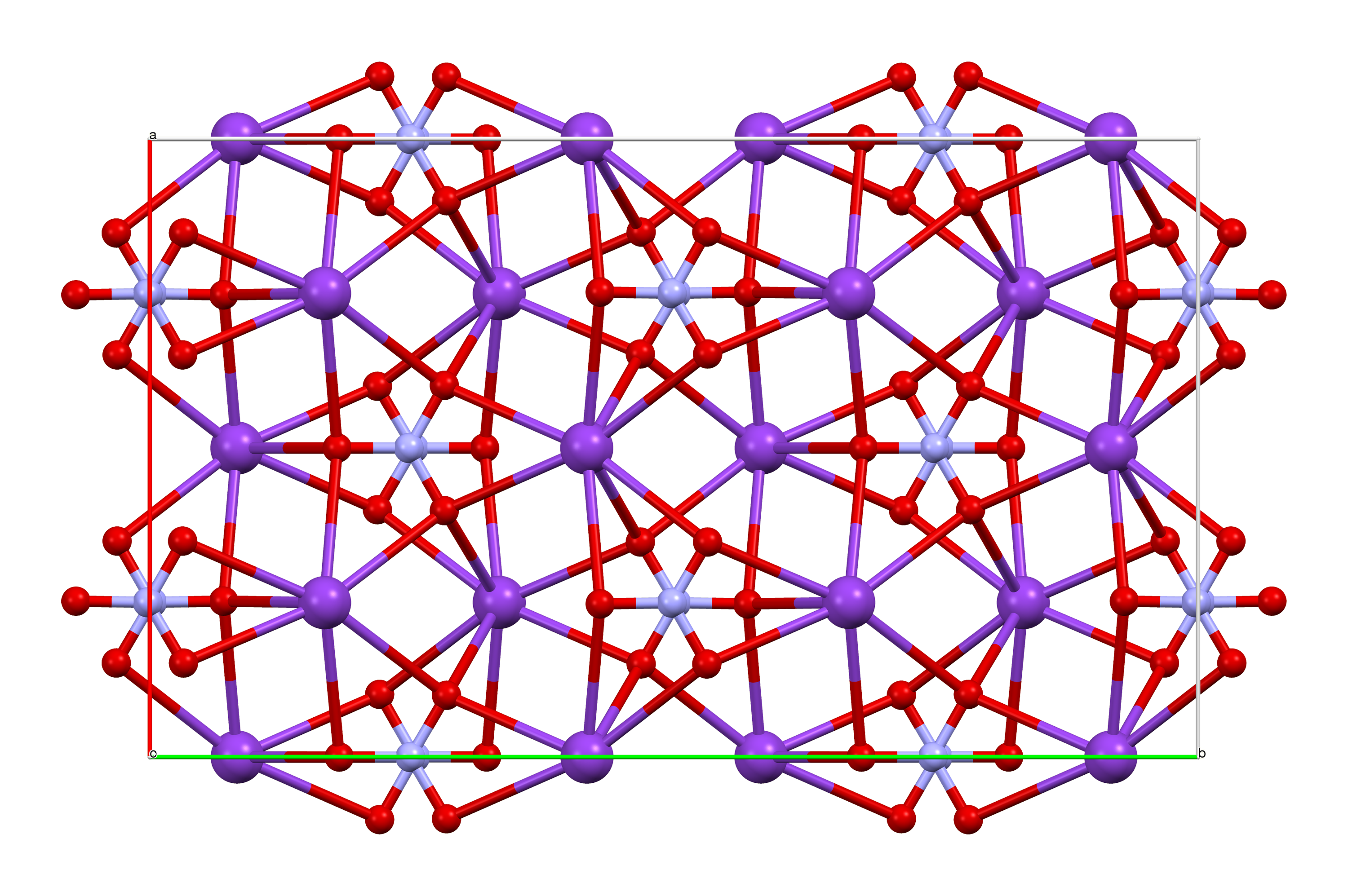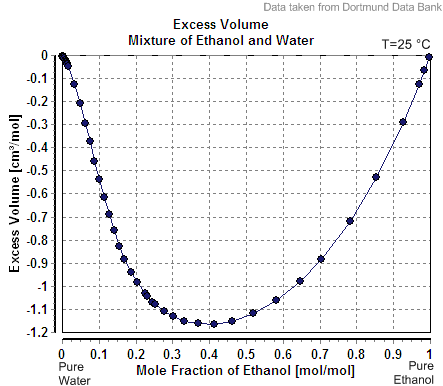|
Alcohol Proof
Alcohol proof (usually termed simply "proof" in relation to a beverage) is a measure of the content of ethanol (alcohol) in an alcoholic beverage. The term was originally used in England and from 1816 was equal to about 1.75 times the percentage of alcohol by volume (ABV). The United Kingdom today uses ABV instead of proof. In the United States, alcohol proof is defined as twice the percentage of ABV. The definition of proof in terms of ABV varies from country to country. The measurement of alcohol content and the statement of content on bottles of alcoholic beverages is regulated by law in many countries. In 1972, Canada phased out the use of "proof"; in 1973, the European Union followed suit; and the United Kingdom, where the concept originated, started using ABV instead in 1980. The United States Code mandates the use of ABV, but permits proof to be used also. The degree symbol (°) is sometimes used to indicate alcohol proof, either alone (e.g. 10°) or after a space and joi ... [...More Info...] [...Related Items...] OR: [Wikipedia] [Google] [Baidu] |
Bacardi 151 Bottle
Bacardi Limited ( , , ) is the largest privately held, family-owned Distilled beverage, spirits company in the world. Originally known for its Bacardí brand of white rum, it now has a portfolio of more than 200 brands and labels. Founded in Cuba in 1862 by Facundo Bacardi, Facundo Bacardí i Massó, a Spain, Spanish businessman born in Sitges, Bacardi Limited has been family-owned for seven generations, and employs more than 8,000 people with sales in approximately 170 countries. Bacardi Limited is the group of companies as a whole and includes Bacardi International Limited. Bacardi Limited is headquartered in Hamilton, Bermuda, and has a board of directors led by the original founder's great-great-grandson, Facundo L. Bacardí, the board's chairman. The company's Cathedral of Rum in Puerto Rico, the largest rum Distillation, distillery in the world, produces 85% of Bacardi rum worldwide, while the remaining 15% originates from distilleries in Mexico and India. History Early his ... [...More Info...] [...Related Items...] OR: [Wikipedia] [Google] [Baidu] |
Potassium Nitrate
Potassium nitrate is a chemical compound with a sharp, salty, bitter taste and the chemical formula . It is a potassium salt of nitric acid. This salt consists of potassium cations and nitrate anions , and is therefore an alkali metal nitrate. It occurs in nature as a mineral, niter (or ''nitre'' outside the United States). It is a source of nitrogen, and nitrogen was named after niter. Potassium nitrate is one of several nitrogen-containing compounds collectively referred to as saltpetre (or saltpeter in the United States). Major uses of potassium nitrate are in fertilizers, tree stump removal, rocket propellants and fireworks. It is one of the major constituents of traditional gunpowder (black powder). In processed meats, potassium nitrate reacts with hemoglobin and myoglobin generating a red color. Etymology Nitre, or potassium nitrate, because of its early and global use and production, has many names. As for nitrate, Egyptian and Hebrew words for it had the ... [...More Info...] [...Related Items...] OR: [Wikipedia] [Google] [Baidu] |
Code Of Federal Regulations
In the law of the United States, the ''Code of Federal Regulations'' (''CFR'') is the codification of the general and permanent regulatory law, regulations promulgated by the executive departments and agencies of the federal government of the United States. The CFR is divided into 50 titles that represent broad areas subject to federal regulation. The CFR annual edition is published as a special issue of the ''Federal Register'' by the Office of the Federal Register (part of the National Archives and Records Administration) and the Government Publishing Office. In addition to this annual edition, the CFR is published online on the Electronic CFR (eCFR) website, which is updated daily. Background Congress frequently delegates authority to an executive branch agency to issue regulations to govern some sphere. These statutes are called "authorizing statute" or "enabling statute" (or "authorizing legislation"). Authorizing statutes typically have two parts: (1) a substantive sc ... [...More Info...] [...Related Items...] OR: [Wikipedia] [Google] [Baidu] |
Bottled In Bond
Bottled in bond (BIB) is a label for an American-produced distilled beverage that has been aged and bottled according to a set of legal regulations contained in the United States government's Standards of Identity for Distilled Spirits, as originally specified in the Bottled-in-Bond Act of 1897. As a reaction to widespread adulteration of American whiskey, the act made the federal government the guarantor of a spirit's authenticity, gave producers a tax incentive for participating and helped ensure proper accounting and the collection of tax that was due. Although the regulations apply to all spirits, most bonded spirits are whiskeys in practice. Requirements To be labeled as bottled-in-bond or bonded, the liquor must be the product of one distillation season (January–June or July–December) by one distiller at one distillery. It must have been aged in a federally bonded warehouse under U.S. government supervision for at least four years and bottled at 100 (U.S.) proof (50% al ... [...More Info...] [...Related Items...] OR: [Wikipedia] [Google] [Baidu] |
Whisky
Whisky or whiskey is a type of liquor made from Fermentation in food processing, fermented grain mashing, mash. Various grains (which may be Malting, malted) are used for different varieties, including barley, Maize, corn, rye, and wheat. Whisky is typically Aging (food), aged in wooden casks, commonly of charred white oak. Uncharred white oak casks previously used for the aging of Port wine, port, rum or sherry may be employed during storage to impart a unique flavor and color. Whisky is a strictly regulated Alcoholic spirit, spirit worldwide with many classes and types. The typical unifying characteristics of the different classes and types are the fermentation of grains, distillation, and aging in Barrel, wooden barrels. Etymology The word ''whisky'' (or ''whiskey'') is an anglicisation of the Classical Gaelic word (or ) meaning "water" (now written as in Modern Irish, and in Scottish Gaelic). This Gaelic word shares its ultimate Indo-European_vocabulary#Natural_features, ... [...More Info...] [...Related Items...] OR: [Wikipedia] [Google] [Baidu] |
Hydrometer
A hydrometer or lactometer is an instrument used for measuring density or relative density of liquids based on the concept of buoyancy. They are typically Calibration, calibrated and Graduation (instrument), graduated with one or more scales such as specific gravity. A hydrometer usually consists of a sealed hollow glass tube with a wider bottom portion for buoyancy, a ballast such as lead or Mercury (element), mercury for stability, and a narrow stem with graduations for measuring. The liquid to test is poured into a tall container, often a graduated cylinder, and the hydrometer is gently lowered into the liquid until it floats freely. The point at which the surface of the liquid touches the stem of the hydrometer correlates to relative density. Hydrometers can contain any number of scales along the stem corresponding to properties correlating to the density. Hydrometers are calibrated for different uses, such as a lactometer for measuring the density (creaminess) of milk, a sa ... [...More Info...] [...Related Items...] OR: [Wikipedia] [Google] [Baidu] |
Bartholomew Sikes
Bartholomew Sikes (died 1803) was an officer in the employ of HM Excise who in the late 18th century perfected a device by which the alcoholic content of a liquid can be measured. In 1802 he presented his invention to a board of inquiry together with nine other competitors who included Mary Dicas of Liverpool whose hydrometer was the approved instrument by the American excise. Sikes' device was chosen over the other nine. The success of the device caused his name to be immortalised in an Act of Parliament: Sikes' Hydrometer Act 1816 ( 56 Geo. 3. c. 140). From 1816 until 1980 the hydrometer was the standard used in the UK to measure the alcohol proof Alcohol proof (usually termed simply "proof" in relation to a beverage) is a measure of the content of ethanol (alcohol) in an alcoholic beverage. The term was originally used in England and from 1816 was equal to about 1.75 times the percentage ... of spirits, and from 1846 in Canadian law. References Bibliography * {{DEFA ... [...More Info...] [...Related Items...] OR: [Wikipedia] [Google] [Baidu] |
Mass
Mass is an Intrinsic and extrinsic properties, intrinsic property of a physical body, body. It was traditionally believed to be related to the physical quantity, quantity of matter in a body, until the discovery of the atom and particle physics. It was found that different atoms and different elementary particle, elementary particles, theoretically with the same amount of matter, have nonetheless different masses. Mass in modern physics has multiple Mass in special relativity, definitions which are conceptually distinct, but physically equivalent. Mass can be experimentally defined as a measure (mathematics), measure of the body's inertia, meaning the resistance to acceleration (change of velocity) when a net force is applied. The object's mass also determines the Force, strength of its gravitational attraction to other bodies. The SI base unit of mass is the kilogram (kg). In physics, mass is Mass versus weight, not the same as weight, even though mass is often determined by ... [...More Info...] [...Related Items...] OR: [Wikipedia] [Google] [Baidu] |
Volume
Volume is a measure of regions in three-dimensional space. It is often quantified numerically using SI derived units (such as the cubic metre and litre) or by various imperial or US customary units (such as the gallon, quart, cubic inch). The definition of length and height (cubed) is interrelated with volume. The volume of a container is generally understood to be the capacity of the container; i.e., the amount of fluid (gas or liquid) that the container could hold, rather than the amount of space the container itself displaces. By metonymy, the term "volume" sometimes is used to refer to the corresponding region (e.g., bounding volume). In ancient times, volume was measured using similar-shaped natural containers. Later on, standardized containers were used. Some simple three-dimensional shapes can have their volume easily calculated using arithmetic formulas. Volumes of more complicated shapes can be calculated with integral calculus if a formula exists for the shape ... [...More Info...] [...Related Items...] OR: [Wikipedia] [Google] [Baidu] |
International Organization Of Legal Metrology
The International Organization of Legal Metrology ( - OIML), is an intergovernmental organisation that was created in 1955 to promote the global harmonisation of the legal metrology procedures that underpin and facilitate international trade. Such harmonisation ensures that certification of measuring devices in one country is compatible with certification in another, thereby facilitating trade in the measuring devices and in products that rely on the measuring devices. Such products include weighing devices, taxi meters, speedometers, agricultural measuring devices such as cereal moisture meters, health related devices such as exhaust measurements and alcohol content of drinks. Since its establishment, the OIML has developed a number of guidelines to assist its Members, particularly developing nations, to draw up appropriate legislation concerning metrology across all facets of society and guidelines on certification and calibration requirements of new products, particularly w ... [...More Info...] [...Related Items...] OR: [Wikipedia] [Google] [Baidu] |
Volume Fraction
In chemistry and fluid mechanics, the volume fraction \varphi_i is defined as the volume of a constituent ''V''''i'' divided by the volume of all constituents of the mixture ''V'' prior to mixing: :\varphi_i = \frac . Being dimensionless quantity, dimensionless, its unit is 1; it is expressed as a number, e.g., 0.18. It is the same concept as volume percent (vol%) except that the latter is expressed with a denominator of 100, e.g., 18%. The volume fraction coincides with the ''volume concentration'' in ideal solutions where the volumes of the constituents are additive (the volume of the solution is equal to the sum of the volumes of its ingredients). The sum of all volume fractions of a mixture is equal to 1: :\sum_^ V_i = V ; \qquad \sum_^ \varphi_i = 1. The volume fraction (percentage by volume, vol%) is one way of expressing the composition of a mixture with a dimensionless quantity; mass fraction (chemistry), mass fraction (percentage by weight, wt%) and mole fraction (per ... [...More Info...] [...Related Items...] OR: [Wikipedia] [Google] [Baidu] |
Gravity (alcoholic Beverage)
Gravity, in the context of fermenting alcoholic beverages, refers to the specific gravity (abbreviated SG), or relative density compared to water, of the wort or must at various stages in the fermentation. The concept is used in the brewing and wine-making industries. Specific gravity is measured by a hydrometer, refractometer, pycnometer or oscillating U-tube electronic meter. The density of a wort is largely dependent on the sugar content of the wort. During alcohol fermentation, yeast converts sugars into carbon dioxide and alcohol. By monitoring the decline in SG over time the brewer obtains information about the health and progress of the fermentation and determines that it is complete when gravity stops declining. If the fermentation is finished, the specific gravity is called the final gravity (abbreviated FG). For example, for a typical strength beer, original gravity (abbreviated OG) could be 1.050 and FG could be 1.010. Several different scales have been used for meas ... [...More Info...] [...Related Items...] OR: [Wikipedia] [Google] [Baidu] |







